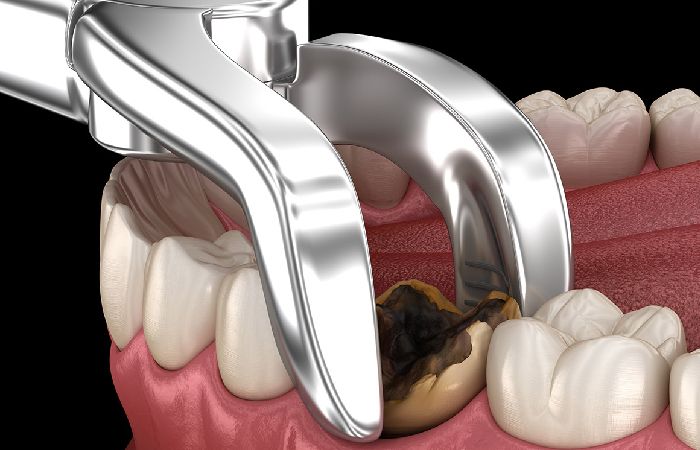Tooth Extraction in the 2020s – No one like to have their teeth pulled. It just might rank as one of the most uncomfortable if not painful (and traumatic) medical procedures a dental patient can experience. And yet, almost everyone, at one point or another, will have no choice but to have a tooth or teeth extracted. This is especially true as you age and your teeth wear out.
Even if you’ve been diligent about brushing your teeth three to four times per day (after every meal), flossing at least once per day, limiting sweets and sugary sodas in your diet, plus getting regular checkups and cleanings at a family dentist’s practice such as Napa Family Dental, an Albuquerque dental office, you will still likely require a pulled tooth.
According to a new report, a tooth extraction will be necessary for a variety of reasons, including acute decay and damage. One of the oldest, most trusted, and most common dental techniques, known as tooth extraction, will do away with dangerous bacteria inside your mouth and therefore improve your overall health.
Defining Tooth Extraction
State the dental experts, tooth extraction is the surgical procedure by which your bad tooth is removed from its jaw socket. It’s also commonly referred to as “pulling” your tooth.
Conditions for Tooth Extraction
It’s important to save your natural teeth at all costs. But there are times that restorative procedures such as dental crowns and fillings won’t make your bad tooth healthy and viable. If your tooth is damaged, broken, and/or cracked and is considered beyond repair, then extraction will be required.
Your family dentist will likely advise tooth extraction if you possess:
–A fractured tooth
–Severe cavities and decay
–Crowded teeth
–An impacted tooth
–Tooth luxation
–Severe gum disease
Specialists Who Extract Bad Teeth
While some family dentists are qualified to extract teeth, it’s more likely that a periodontist or oral surgeon will perform the operation. Dentists can often handle more simple extractions, omplicated cases will always referred to oral surgeons.
Tooth Extraction Procedural Details

Prior to the actual tooth extraction. Your dentist will examine the bad tooth or teeth along with the surrounding gum tissue. Dental X-rays will be taken to check the bone levels and to make a determination of the overall damage that extend into the jawbone.
You need to inform the dentist/oral surgeon of any medications you’re currently taking. Plus vitamins and/or serious existing medical conditions like heart disease, for instance. When all the information is collected and properly analyzed, your treatment plus sedation methods and options will be discussed with you in great detail.
Options for Tooth Extraction Sedation
According to experts, many people suffer from dental anxiety. Therefore, lots of healthcare providers are offering highly effective sedation during traumatic tooth extractions. The sedation also works for people who just want to be more comfortable during the procedure.
In the 2020s, dentistry sedation medications and procedures include:
Nitrous Oxide: Commonly known as “laughing gas,” nitrous oxide has been around for decades. It’s ingested by inhaling the gas through nosepiece or a mask. It’s said to be an excellent option for people who only require a light level of sedation. If you are given nitrous oxide, you will allow to drive to and from your tooth extraction appointment.
Oral Conscious Sedation: As the term suggest, this variety of medical sedation is given via mouth, normally in pill form. One hour or so prior to your schedule appointment. Some of the more common meds include but not limited to midazolam, lorazepam, triazolam, and diazepam. The oral conscious sedation option will sometimes combined with intravenous sedation or nitrous oxide treatment. If you choose this type of sedation, you will require to have a driver escort you to and from your extraction procedure.
Intravenous sedation or IV: IV is highly recommend for persons who possess significant dental anxiety or for those who require lengthy dental surgical procedure. Pain and sedative meds such as meperidine and midazolam will be deliver directly to your bloodstream via an IV line. Since this is consider the highest sedation level that can had inside a dentistry office, patients will require a driver to take them to and from the appointment.
It’s possible your dental provider will advise general anaesthesia in a hospital or medical centre setting. But this is require for complicate cases such as corrective jaw surgery and/or facial reconstruction operations.


